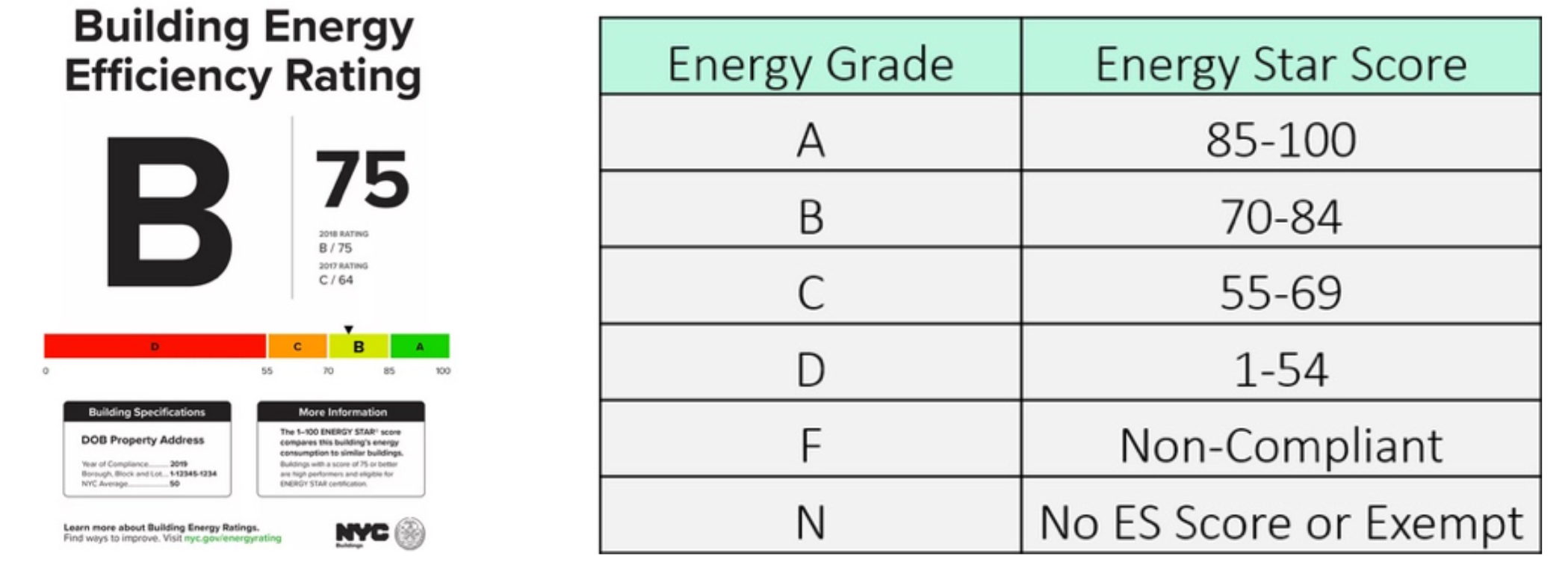The Power of Transparency
Since 2020, the city has require all private buildings over 25,000 SF (or city owned buildings that are over 10,000 SF) to post their energy grade as calculated by Energy Star’s Portfolio Manager.
These letter grades are based on the previous calendar year’s Energy Star Scores submitted to the DOB. Once assigned a grade it must be posted in a visible location by the main entrance within 30 days. Building Energy Grades will use letter grades A-F, just like schools, to make them easily understood by the public and offer transparency.
Some have complained that this is a shaming tactic and will unfairly label buildings which were once considered high performers with only a grade of “B” since the standard required for an “A” has been raised. Formerly, under the previous rating system – Energy Star – a score of 75 or the top 25% was considered a top tier. Now, a grade of “A” is reserved only for those with a grade of 85 or above or the top 15%.
The power of transparency will hopefully motivate building owners to complete an energy audit of their properties and learn how to make them more energy efficient. In fact, the Building Energy Grades are acting as a catalyst and a transition to the Climate Mobilization Act’s emissions requirements set to go into effect in 2024 when significant fines will be levied if you don’t meet the emissions standard. It is important to remember that transparency was very successful in transforming the restaurant industry when letter grades were assigned to health inspections in 2010. When the system was first implemented in 2010, only 57% of the restaurants in NYC achieved a grade of A, by 2018 almost 94% received the grade of A. Posting grades motivated restaurant owners to tighten up the day to day operation of their businesses and the end result made a better, safer dining experience for the guest.
Given that buildings are responsible for approximately 70% of the carbon emissions it is imperative that we recognize their impact on the environment and take responsibility. The upfront investment in building energy upgrades will pay off over time with reduced energy costs, produce a more comfortable environment for those who inhabit those spaces and will allow owners to demonstrate their commitment to the environment.
Need to know your grade? Energy experts can assist you in collecting the consumption data required to benchmark your property and then upload it to Portfolio Manager. If you receive a less than ideal grade there are many things you can do to improve your building’s efficiency. Implementing change begins with an energy audit which entails reviewing all the systems that expend energy in your building and identifying what you can do to reduce consumption. Creating a master plan will allow owners to implement the upgrades in a logical and financially sound manner to create a path of compliance before 2024 when fines come into effect.

